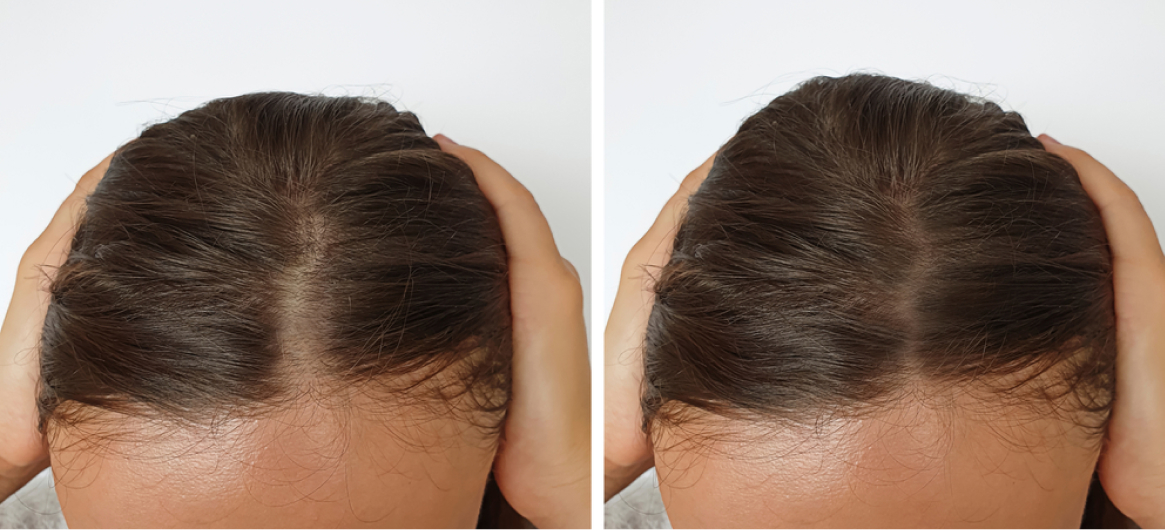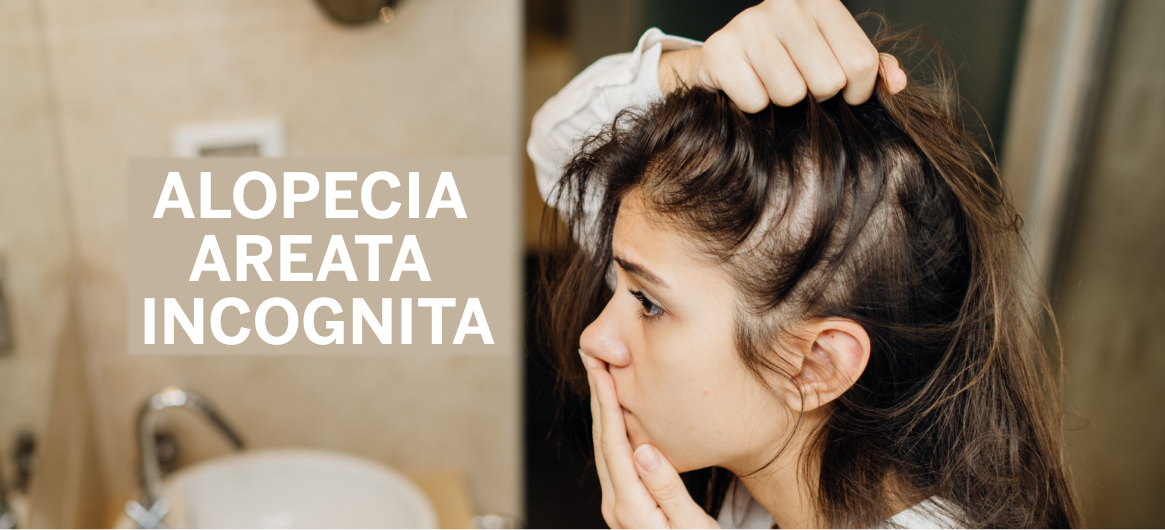When is it too late to use minoxidil? This common question reflects a very real concern for anyone noticing progressive thinning or bald spots.
While minoxidil has helped countless individuals slow hair loss and even regrow hair, its success depends on timing and the viability of the follicles.
Understanding how and when minoxidil works—and when it may no longer be effective—can help you make informed decisions about your treatment options. In this guide, we’ll explore the science, limitations, and alternatives to help you take control of your hair health.
Understanding How Minoxidil Works for Hair Loss
Hair loss can be a complex and distressing process, but understanding how minoxidil works helps you set realistic expectations and improve treatment outcomes.
Originally developed as a blood pressure medication, minoxidil was later found to promote hair growth, though its mechanisms are still being studied. It is believed that minoxidil supports follicle activity and prolongs hair growth in multiple ways.
The Hair Growth Cycle
Hair growth follows a repeating cycle of three phases: anagen (growth), catagen (transition), and telogen (resting).
Most scalp hairs are in the anagen phase, which can last 2–7 years. The catagen phase lasts a few weeks, and the telogen phase lasts about 2–3 months before the hair sheds.
Healthy hair growth depends on the timely cycling of follicles through these phases. Disruptions due to genetics, hormones, illness, or stress can shift more hairs into the telogen phase, resulting in shedding or thinning.
Minoxidil targets the damage caused by these disruptions to encourage follicles to re-enter the anagen phase.
How Minoxidil Impacts Hair Growth
Minoxidil promotes hair growth through multiple biological effects, making it effective for many people with androgenetic alopecia and other forms of hair thinning.
As a vasodilator, minoxidil widens blood vessels, increasing blood flow to the hair follicles. This enhanced circulation delivers more oxygen and nutrients, which may help sustain and revive weakened follicles.
Additionally, minoxidil opens potassium channels in cell membranes. This action is believed to prolong the anagen (growth) phase and shorten the telogen (resting) phase, prompting follicles to grow hair sooner.
It also enlarges miniaturized follicles, allowing them to produce thicker, more pigmented hairs instead of fine vellus hair.
These effects support visible regrowth, particularly in areas with thinning rather than complete baldness. While not a cure, minoxidil can significantly slow hair loss progression and stimulate regrowth in responsive individuals.
Topical Minoxidil vs. Oral Minoxidil
Topical minoxidil is available over the counter in 2% and 5% concentrations and is applied directly to the scalp. It works locally, with minimal systemic absorption, and is generally well-tolerated. Stronger topical solutions are available by prescription.
Prescription oral minoxidil delivers the drug systemically and may benefit patients who do not respond well to topical forms. Oral minoxidil is typically used at low doses for hair loss and has shown promising results in both men and women.
However, it may carry a higher risk of side effects such as fluid retention, increased heart rate, or changes in blood pressure. The choice between topical and oral forms depends on factors such as the severity of hair loss, patient preference, and tolerance.
Who Benefits Most From Minoxidil Treatment?
Minoxidil tends to be most effective for people in the early stages of hair loss, particularly those with androgenetic alopecia (male or female pattern hair loss). These patients typically retain some follicle activity, even in thinning areas.
Younger individuals and those who begin treatment within the first five years of noticeable hair loss often see the best results.
Minoxidil is also used for certain other conditions, including telogen effluvium and traction alopecia, though it is not FDA-approved for these uses.
Patients with widespread bald patches, scarring alopecia, or longstanding hair loss may not respond as well, as minoxidil requires functioning follicles to stimulate growth.
How Long Does It Take for Minoxidil To Work?
Minoxidil requires consistent use over time before results are noticeable. Most patients begin to see reduced shedding within 2 to 3 months, with visible signs of regrowth starting around 4 to 6 months. Optimal results typically appear after 8 to 12 months of uninterrupted use.
Some people experience increased shedding during the first few weeks. This is a sign that dormant follicles are transitioning to the growth phase. It’s important not to stop using minoxidil during this shedding period, as this is often part of the process.
Continued use is necessary to maintain results; stopping treatment usually leads to loss of any regrown hair within months.
When Is It Too Late To Use Minoxidil?
Minoxidil is most effective when hair follicles are still active, even if they’re producing only thin or sparse hair. It may be too late to use minoxidil if the follicles have become completely dormant or replaced by scar tissue.
While age and duration of hair loss are important considerations, the key factor is whether viable follicles remain.
When Minoxidil May Not Be Effective
Minoxidil is unlikely to work when hair follicles have undergone irreversible miniaturization or have been inactive for an extended period. In areas where the scalp appears smooth, shiny, and free of vellus (peach fuzz) hairs, follicles are typically no longer viable.
Additionally, individuals with scarring alopecias, such as lichen planopilaris or central centrifugal cicatricial alopecia, may not benefit, as scar tissue replaces follicles. In these cases, minoxidil has little to no chance of stimulating regrowth.
Accurate diagnosis by a dermatologist is critical to determine treatment potential.
Does Age Matter for Starting Minoxidil?
Age alone does not determine whether minoxidil will be effective, but older individuals may face more challenges. Hair loss in people over 50 is often more advanced and longstanding, meaning fewer active follicles are present.
Clinical studies show that minoxidil is generally safe for adults over 65, but its efficacy may be diminished in this group.
That being said, some older patients with ongoing thinning or visible miniaturized hairs may still benefit. The presence of responsive follicles—not just age—guides treatment success.
When Does Hair Loss Stabilize?
Hair loss tends to stabilize after a prolonged period, particularly in male and female pattern hair loss. This stabilization typically occurs 15 to 25 years after onset, though the timeline varies. Once stabilized, the rate of shedding slows significantly, and bald areas may stop expanding.
Unfortunately, stabilized hair loss often corresponds with follicle dormancy or death, thus limiting treatment options.
However, some people continue to lose hair at a slow rate even after many years, which means minoxidil may still offer some benefit in prolonging growth cycles or preserving remaining hair.
Can Minoxidil Help Once Hair Loss Has Stabilized?
Minoxidil may offer limited benefit after hair loss has stabilized, depending on whether any follicles remain active. If miniaturized or vellus hairs are still present, minoxidil could thicken existing strands and extend the anagen phase, preventing further deterioration.
However, in areas where follicles are no longer functional, minoxidil cannot restore hair. In stabilized cases with no visible thinning hair, other interventions, such as hair transplantation, may be more appropriate.
A dermatologist can assess follicle viability through a scalp exam or trichoscopy to determine whether treatment with minoxidil is still worthwhile.

When Is It Too Late To Regrow Hair With Minoxidil?
It’s too late to regrow hair with minoxidil when hair follicles are no longer functional. Minoxidil requires at least partially active follicles to stimulate regrowth, so completely bald areas with no vellus hair or follicular activity are unlikely to respond.
A clinical evaluation can help determine whether regrowth is still possible.
The Importance of Active Hair Follicles
Minoxidil cannot create new hair follicles—it can only stimulate those that are still alive but underperforming. Active follicles, even if they’re only producing fine, colorless vellus hairs, can respond by generating thicker, longer strands.
In contrast, follicles that have been dormant for years or destroyed by scarring are no longer capable of growing hair. This is why early intervention is so important.
Dermatologists often use tools like dermoscopy to detect signs of follicular activity, which helps determine whether minoxidil is a viable option for regrowth.
Differences Between Thinning Hair and Bald Spots
Thinning hair often indicates that follicles are still active but miniaturized, which is ideal for minoxidil treatment. These areas may look sparse or wispy, but still show potential for regrowth.
Bald spots, especially those that appear smooth and shiny, usually signal that the underlying follicles have stopped functioning. In such cases, minoxidil is unlikely to help.
However, some small bald patches may contain residual vellus hairs, and if so, treatment could improve coverage. Distinguishing between thinning and true baldness is essential for setting realistic expectations.
Key Factors That Affect Minoxidil’s Success
Minoxidil is not a one-size-fits-all treatment. Its effectiveness depends on several personal and biological variables that influence how well the follicles respond.
Understanding these factors can help patients set realistic expectations and work with their dermatologist to optimize outcomes.
Key elements include how long hair loss has been occurring, the pattern and cause of hair thinning, genetic predisposition, and how consistently the medication is used.
Duration and Pattern of Hair Loss
The longer hair loss has been present, the less likely minoxidil is to stimulate meaningful regrowth. Early-stage thinning often means follicles are still responsive, while longstanding bald areas may indicate irreversible miniaturization or dormancy.
Additionally, minoxidil works best on diffuse thinning, particularly at the crown or along the mid-scalp. It tends to be less effective on receding hairlines or areas of patchy baldness.
Recognizing the pattern of loss helps determine whether minoxidil is an appropriate first-line treatment or better used in combination with other therapies.
Genetics and Family History
Genetics play a significant role in how an individual responds to minoxidil. Those with a strong family history of androgenetic alopecia may experience earlier onset and faster progression of hair loss, which can reduce the window of time during which minoxidil is effective.
However, some individuals with a genetic predisposition still respond well, particularly if treatment begins early.
Genetic variations may also affect how the body metabolizes minoxidil, influencing results. In some cases, a genetic test can help predict responsiveness to treatment, though it's not commonly performed in standard dermatologic care.
Consistency and Proper Use
Minoxidil must be used consistently—usually once or twice daily, depending on the formulation—to maintain its benefits. Irregular application significantly reduces efficacy and may lead to renewed shedding.
It’s also important to apply the medication correctly, ensuring it reaches the scalp rather than just coating the hair. Patients should allow the solution or foam to dry fully and avoid rinsing the area for several hours.
Missed doses or early discontinuation can reverse any progress made. Long-term commitment and proper technique are essential for maximizing success with minoxidil.
Other Hair Loss Treatments To Consider
While minoxidil is a valuable tool in managing hair loss, it’s not the only option. Several other treatments can complement minoxidil or, in some cases, offer greater efficacy depending on the type and stage of hair loss.
Dermatologists often tailor treatment plans to include multiple therapies for enhanced results.

Finasteride
Finasteride is a 5-alpha-reductase inhibitor that reduces dihydrotestosterone (DHT), a hormone linked to follicle miniaturization in androgenetic alopecia. Available by prescription in both oral and topical forms, finasteride slows or halts hair loss and may promote regrowth in many men.
Oral finasteride is FDA-approved for male pattern baldness, while topical formulations are often used off-label to minimize systemic side effects. Women of childbearing age should avoid finasteride due to potential risks.
When combined with minoxidil, finasteride can significantly improve hair density and retention.
Dutasteride
Dutasteride works similarly to finasteride but inhibits both type I and type II forms of 5-alpha-reductase, resulting in a more profound DHT reduction. This broader suppression makes it potentially more effective, particularly in individuals who do not respond to finasteride.
Although not FDA-approved for hair loss, both oral and topical dutasteride are used off-label in dermatology with promising results. It is generally reserved for more advanced or stubborn cases.
Like finasteride, it is typically better suited for male patients or postmenopausal women under medical supervision.
Spironolactone
Products with spironolactone are an antiandrogen that blocks androgen receptors and reduces androgen production, making it especially effective for women with androgen-related hair loss. It is most commonly prescribed orally, though topical forms are increasingly used to avoid systemic side effects.
Spironolactone helps slow shedding and may promote regrowth, particularly in cases of female pattern hair loss or hormonal imbalances like PCOS. It is not typically used in men due to the risk of feminizing effects.
Dermatologic monitoring is essential during treatment to manage side effects and ensure proper dosing.
PRP Therapy
Platelet-rich plasma (PRP) therapy involves drawing a patient’s blood, concentrating the platelets, and injecting the plasma into thinning areas of the scalp. Platelets contain growth factors that may stimulate dormant follicles and improve hair density.
PRP is often used in conjunction with minoxidil or other medications to enhance results. It typically requires a series of sessions spaced several weeks apart, followed by maintenance treatments.
While results vary, many patients notice reduced shedding and increased hair thickness. PRP is generally well-tolerated and considered a safe, minimally invasive option.
Low-Level Laser Therapy (LLLT)
Low-level laser therapy (LLLT) uses specific wavelengths of light to stimulate cellular activity in hair follicles, increasing energy production and enhancing blood flow. This noninvasive treatment is available through in-office devices or at-home laser caps and combs.
LLLT is FDA-cleared for treating androgenetic alopecia and can be used alongside minoxidil or oral medications. Regular use is required to maintain results, and it may take several months to see improvement.
LLLT is a good option for patients seeking a drug-free, painless approach to supporting hair regrowth and scalp health.
Combining Minoxidil With Other Treatments
Minoxidil is often most effective when combined with other therapies that target different mechanisms of hair loss. While minoxidil enhances follicular activity and blood flow, medications such as finasteride or dutasteride reduce hormonal triggers.
Adding treatments such as PRP or LLLT can further boost outcomes by stimulating follicle repair and reducing inflammation. Using topical and oral therapies together—under dermatologic guidance—may allow patients to benefit from synergistic effects while minimizing side effects.
Combination therapy is often the most comprehensive and effective strategy for managing progressive hair loss.
Natural Ways To Improve Hair Growth
While medical treatments are often necessary for significant hair loss, certain natural strategies can support healthy hair growth and enhance the effectiveness of clinical therapies. These approaches focus on optimizing scalp health, nutrition, and overall wellness.
- Balanced Diet: Adequate protein, iron, zinc, biotin, and omega-3 fatty acids are essential for healthy hair. Deficiencies can lead to increased shedding.
- Scalp Massage: Regular scalp massages improve circulation, which may help deliver more oxygen and nutrients to hair follicles.
- Stress Reduction: Chronic stress can disrupt the hair cycle. Meditation, yoga, or counseling can help reduce cortisol-related shedding.
- Gentle Hair Care: Avoiding tight hairstyles, heat styling, and harsh chemicals helps prevent breakage and traction-related hair loss.
- Topical Natural Oils: Rosemary oil, pumpkin seed oil, and caffeine-based treatments may have modest effects on growth when used consistently.
- Regular Exercise: Physical activity improves blood flow and supports hormonal balance, both of which contribute to scalp and follicle health.
When Is It Too Late To Get a Hair Transplant?
It may be too late for a hair transplant if the donor area (usually the back and sides of the scalp) lacks sufficient healthy follicles to harvest. Hair transplants also aren’t ideal for individuals with diffuse thinning or scarring alopecia, where follicle health is compromised throughout the scalp.
Additionally, candidates must have realistic expectations; transplants cannot restore full density in advanced baldness. A board-certified hair restoration specialist can determine transplant viability based on scalp analysis, hair characteristics, and long-term goals.
When Is It Too Late To Regrow Hair
It’s generally not too late to regrow hair if the follicles are still active, which can be the case in early stages of hair thinning or shedding. However, once the follicles have been dormant for several years or have completely scarred over, as seen in some types of permanent hair loss, regrowth becomes highly unlikely. The sooner treatment begins, the better the chances of preserving and restoring hair.
Making the Right Choice About Minoxidil
Choosing whether to start minoxidil depends on timing, follicle health, and your long-term hair goals. Early treatment offers the best chance for visible regrowth, but even those with moderate thinning may benefit.
A dermatologist can evaluate your scalp to determine if minoxidil is appropriate and whether combination therapy might offer better results.
When is it too late to use minoxidil? The answer lies in the condition of your follicles—so don’t wait too long to explore your options.
Talk to a board-certified dermatologist to discuss your goals and find the solution that is best for you.
Frequently Asked Questions
Can it be too late for minoxidil?
Yes, it can be too late for minoxidil to work if the hair follicles are no longer active. Minoxidil is most effective when used during the early stages of hair thinning. Once follicles are permanently inactive or replaced by scar tissue, regrowth is unlikely.
How late is too late to regrow hair?
It’s typically too late to regrow hair with minoxidil when the scalp is smooth and shiny, which indicates follicle miniaturization has progressed to complete dormancy. If there’s no visible thinning hair or fuzz, minoxidil may not be effective for regrowth.
Why can't you use minoxidil after 65?
Minoxidil is not unsafe after 65, but minoxidil tends to show less consistent results in older adults. Hair loss in this age group is often more advanced or stabilized, meaning fewer active follicles remain to respond to treatment. However, some individuals may benefit.
How bald is too bald for minoxidil?
If the bald area is completely smooth with no visible vellus (peach fuzz) or thinning hairs, minoxidil is unlikely to help. The treatment requires at least some follicle activity. The longer the follicles have been dormant, the less likely they are to respond.







